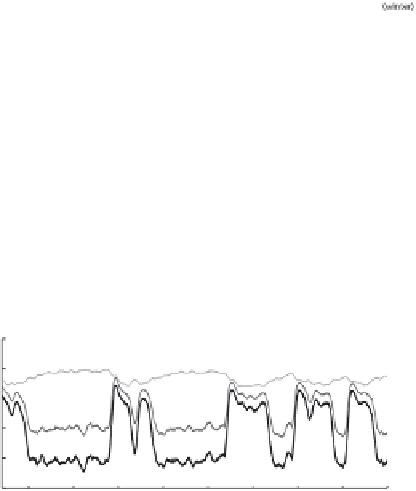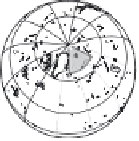Geoscience Reference
In-Depth Information
Figure 2.
Free oscillations of sea ice extent, ocean temperature, and salinity as computed with ECBILT-CLIO (see
Appendix A and Figure A1 for relevant boundary conditions) and the six-box model of Colin de Verdiere et al. [2006]. In
ECBILT-CLIO, the boundary condition (dA) is intermediate between preindustrial (PI) and last glacial maximum (LGM).
Temperature and salinity are averaged over the Arctic area shown. Abrupt changes in all the variables are apparent. Ocean
temperature and salinity time histories in the shallow and deep ocean are fully consistent across the two models. SST is sea
surface temperature, SSS sea surface salinity. Figure 2 (left) is modified from the work of Colin de Verdiere et al. [2006].
Copyright 2006 American Meteorological Society.
oscillations in ocean temperature, salinity, and density
requiring no prescribed freshwater forcing or other time-
varying forcing [Colin de Verdiere et al., 2006; Loving and
Va l l i s , 2005] show millennial oscillations fully consistent
with ECBILT-CLIO. As shall be discussed shortly, SIO also
produces D-O-like oscillations in sea ice extent and mean
ocean temperature qualitatively identical to those produced
by EBILT-CLIO. Also, internal oscillations of a modeled
Atlantic meridional overturning circulation (AMOC) nearly
identical to those computed with ECBILT-CLIO are found in
simulations using ocean-alone and coupled models with
varied boundary conditions [e.g., Winton, 1993; Winton and
Sarachik, 1993].
4. THE LANGEVIN AND VAN DER POL MODELS
Figure 3 shows two realizations of the nonlinear stochastic
Langevin model. The top two plots of Figure 3a show two
independent realizations of the noisy model for the same
parameter values, followed by the two time series that result
when external forcing (summer insolation at 65°N) is included
on the right-hand side of the stochastic equation (see











































































































































































Search WWH ::

Custom Search